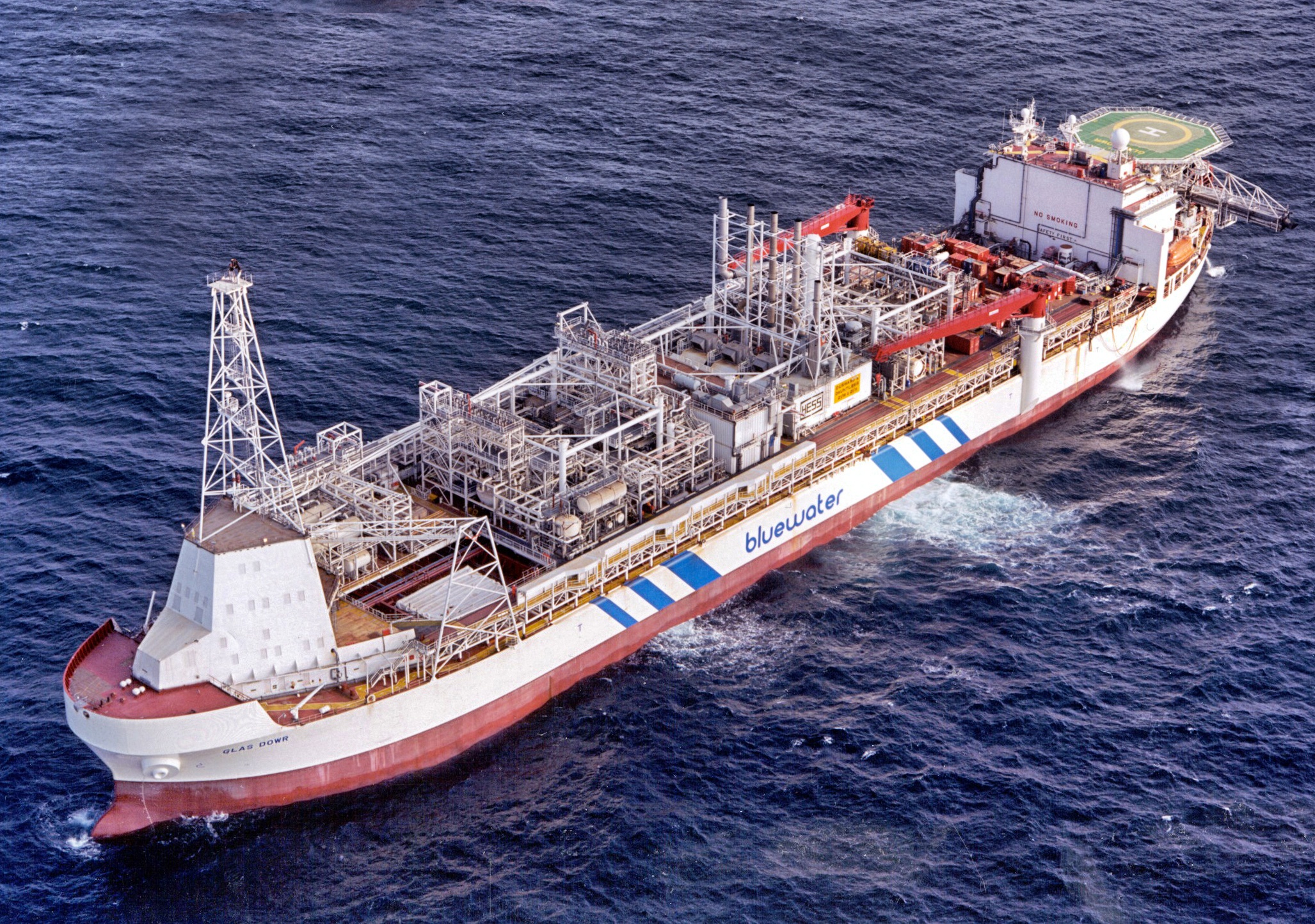![]()

Photo: The FPSO Glas Dowr travelling to her operating location
Achieving profitable availability levels
Since its foundation in 1978, Bluewater has built a technological lead specialising in design, development, lease and operation of tanker-based production and storage systems, and has become a leading provider of innovative Single Point Mooring systems.
Bluewater currently owns and operates five Floating Production Storage and Offloading Systems (FPSOs): the Glas Dowr, the Bleo Holm, the Hæwene Brim and the Munin, which are producing in the UK, South Africa, and China.
The challenge
The Bluewater owned FPSO Glas Dowr was to be re-located to Bredasdorp Basin, South Africa, for the purpose of producing the ECE and EBD reservoir fluids from the Sable Field. Bluewater will operate the production facilities under contract to Petro SA for the life of the field.
The environmental conditions that the vessel was to operate in were significantly different from those experienced in previous locations and presented a number of challenges to both the operation and support of the vessel.
The issues addressed by Taranto Consultancy arose from the significant increase in bio-fouling potential in Mossel Bay that affected the design, operation and support of the seawater dependent systems. The existing designs, new designs and the support requirements were analysed to identify modifications or strategies required to deal with the new location.
The solution
A review of the existing designs for all seawater influenced systems was undertaken to identify the impact of the new location on overall platform performance in terms of availability. The review used Failure Modes, Effects and Criticality Analysis, Reliability Centred Maintenance Analysis together with a Life Cycle Cost analysis to aid identification of potential problems and evaluate solutions.
The result
The review identified a number of modifications to the existing designs, maintenance procedures and operating strategies that would ensure continued high availability of the platform in the new, adverse environmental, conditions. In particular, the analysis indicated that one design change could achieve overall savings of around $60,000.
